As artificial intelligence revolutionizes the creative landscape, finding where to sell AI generated products has become a crucial consideration for artists and entrepreneurs.
This comprehensive guide explores the best platforms for selling AI digital products in 2025, analyzing leading AI product marketplace options to help you make an informed decision about where to showcase and sell your creations.
Overview of AI Generated Products Market
Market Trends
The market for AI-generated products has seen exponential growth over the past few years. With machine learning and neural network advancements, AI can now create intricate art, compose music, design fashion, and even develop unique product prototypes.
As a result, many are exploring where to sell AI generated products, unlocking new revenue streams for artists and businesses seeking to leverage AI product marketplace opportunities.
Check out our Digital Product Creation Blueprint Using AI for a detailed roadmap on creating digital products using AI.
Types of AI Products
- Art: Digital paintings, illustrations, and generative art pieces.
- Music: AI-composed tracks and soundscapes.
- Designs: Logos, branding materials, and product designs.
- Content: AI-generated writing, including articles and poetry.
- Products: Customized merchandise like apparel, accessories, and home decor.
Buyer Demographics
The primary buyers of AI-generated products include tech enthusiasts, art collectors, businesses seeking unique branding materials, and consumers looking for personalized merchandise. Understanding these demographics is crucial when choosing where to sell AI generated products and ensuring your offerings reach the right audience.
Best Platforms for Selling AI Digital Products: Detailed Comparison
The right platform selection is crucial to maximize your reach and profit. Below is an in-depth analysis of the top best platforms for selling AI digital products where you can sell your AI generated products.
Etsy
Platform Overview
Etsy is a marketplace that sells handmade, vintage, unique, and AI-generated products. It’s a popular choice for artists and creators looking to reach a broad audience, making it an excellent option for where to sell AI generated products.

Fee Structure Analysis
- Listing Fee: $0.20 per item.
- Transaction Fee: 6.5 percent of the amount (including the cost of shipping).
- Payment Processing Fee: Varies by country (typically around 3% + $0.25).
Features and Tools
- Customization: Sellers can personalize their shops with banners and profiles.
- Analytics: Provides insights into shop performance and customer behavior.
- Marketing Tools: Options for promoted listings and Etsy Ads.
Pros and Cons
Etsy Pros
Etsy Cons
Success Metrics
- Average Sales Volume: Varies widely; top sellers can make significant monthly revenues.
- User Base: Millions of active buyers globally.
Real-world Examples
Many artists have succeeded on Etsy by offering exclusive AI-generated art prints and customized merchandise.
Shopify
Platform Overview
Shopify is a top-quality e-commerce platform that allows users to create a custom online store. It’s ideal for those looking for complete control over their branding and customer experience, making it a great option for where to sell AI generated products.
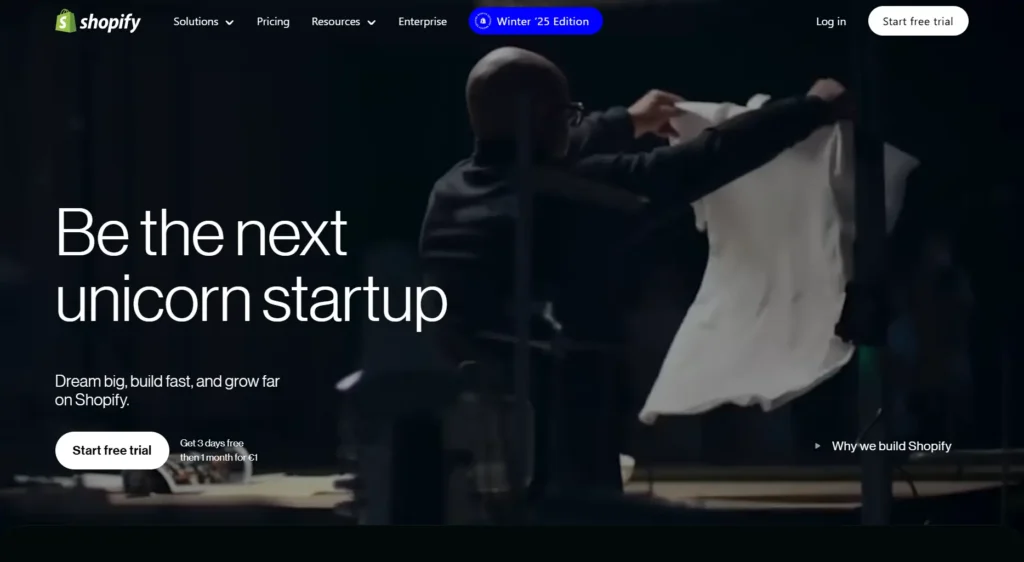
Fee Structure Analysis
- Monthly Subscription: Ranges from $29 to $299 per month.
- Transaction Fee: 2.9% + $0.30 per online transaction (lower with Shopify Payments).
- Additional Costs: Apps and themes may incur extra fees.
Features and Tools
- Customization: Extensive theme library and customization options.
- Analytics: Advanced reporting and analytics tools.
- Marketing Tools: SEO optimization, email marketing integrations, and more.
Pros and Cons
Shopify Pros
Shopify Cons
Success Metrics
- Average Sales Volume: Highly variable; successful stores can generate substantial revenue.
- User Base: Over 1.7 million businesses worldwide.
Real-world Examples
Businesses selling AI-generated designs and merchandise often use Shopify to create branded stores, making it a great option for where to sell AI generated products due to its robust customization and scalability.
Redbubble
Platform Overview
Redbubble is a print-on-demand marketplace where artists can sell their AI-generated designs on various products, including apparel, home decor, and accessories, making it an excellent platform for where to sell AI generated products.
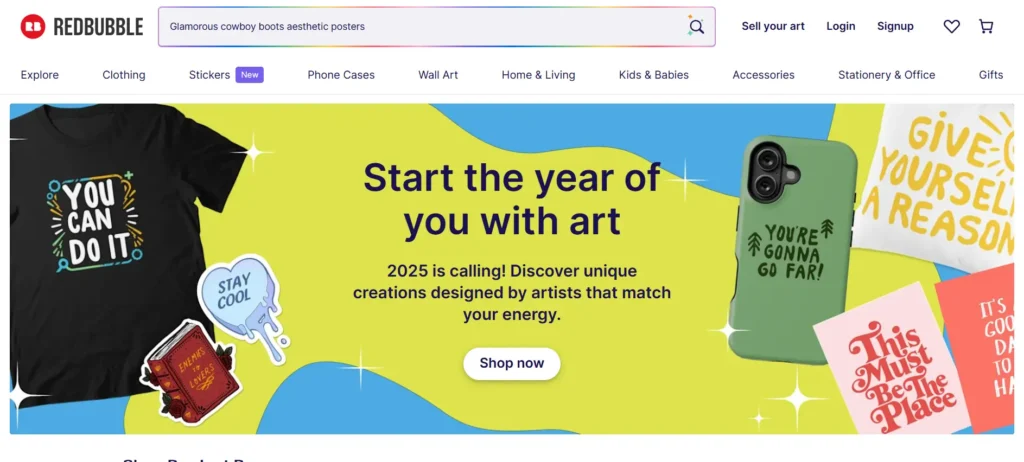
Fee Structure Analysis
- Base Price: Set by Redbubble; sellers add their markup.
- Commission: Variable, depending on the product and markup.
Features and Tools
- Customization: Limited to design uploads and markup settings.
- Analytics: Basic sales and traffic insights.
- Marketing Tools: Integrated with social media sharing.
Pros and Cons
Redbubble Pros
Redbubble Cons
Success Metrics
- Average Sales Volume: Moderate; top artists can achieve significant sales.
- User Base: Millions of global buyers.
Real-world Examples
Artists leverage Redbubble’s print-on-demand services to offer AI-generated designs on t-shirts, phone cases, and more, making it a popular platform for where to sell AI generated products without the need to manage inventory.
Adobe Stock
Platform Overview
Adobe Stock is a premium stock content marketplace integrated with Adobe Creative Cloud. It’s ideal for selling high-quality AI-generated art and designs, making it a great platform for where to sell AI generated products.
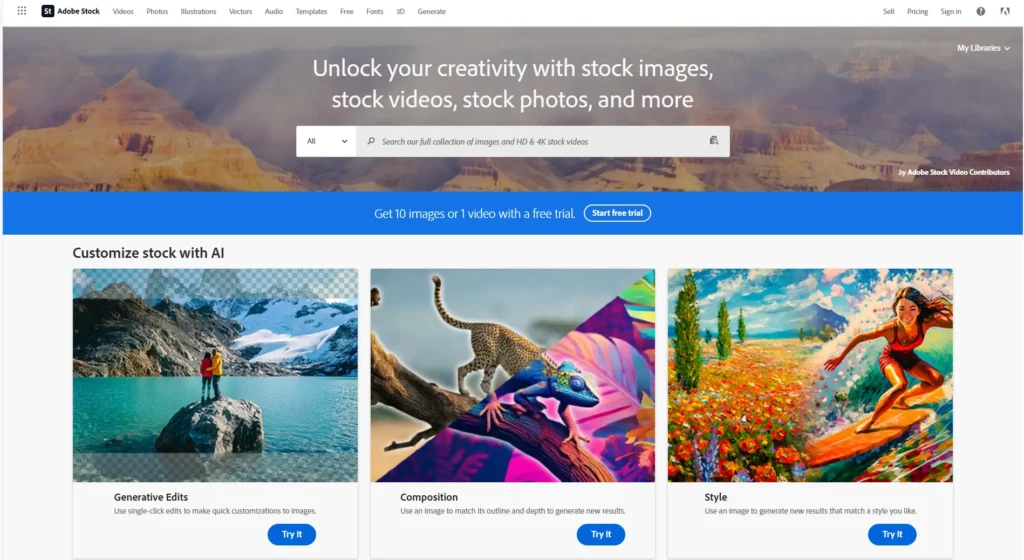
Fee Structure Analysis
- Contributor Earnings: 33% royalty on each sale.
- Exclusive Content: Offers higher royalties for exclusive contributors.
Features and Tools
- Integration: Seamless integration with Adobe Creative Suite.
- Analytics: Detailed sales and performance reports.
- Licensing Options: Various licensing models are available for different uses.
Pros and Cons
Adobe Stock Pros
Adobe Stock Cons
Success Metrics
- Average Sales Volume: Varies; high-quality contributors can earn substantial royalties.
- User Base: Millions of Adobe Creative Cloud subscribers.
Real-world Examples
Graphic designers and digital artists use platforms like Adobe Stock to sell AI-generated illustrations and design elements, benefiting from its professional user base. These creators are increasingly exploring where to sell AI generated products, tapping into platforms that cater to digital content and creative industries.
Fiverr
Platform Overview
Fiverr is an online marketplace for freelancers, allowing you to provide services such as custom AI-generated items, including music, art, and designs. It’s a great platform for where to sell AI generated products and offer personalized services to clients.

Fee Structure Analysis
- Service Fee: 20% commission on each transaction.
- Additional Fees: Optional fees for featured listings and promotions.
Features and Tools
- Gig Packages: Create different service tiers with varying prices.
- Analytics: Insights into gig performance and customer interactions.
- Marketing Tools: Promote gigs through Fiverr’s advertising options.
Pros and Cons
Success Metrics
- Average Sales Volume: Varies widely based on service quality and seller reputation.
- User Base: Millions of active buyers seeking freelance services.
Real-world Examples
Freelancers offering AI-generated music tracks, custom illustrations, and design services find Fiverr an effective platform to reach clients looking for personalized creations. As more creators seek where to sell AI generated products, Fiverr serves as a popular marketplace for showcasing and monetizing unique AI-driven services.
Creative Market
Platform Overview
Creative Market is an online marketplace for digital design assets, including templates, graphics, fonts, and much more. It’s an excellent platform for where to sell AI generated products, offering a wide reach to buyers seeking unique digital items.

Fee Structure Analysis
- Commission Fee: 30% of each sale.
- Additional Costs: Optional fees for promotional tools.
Features and Tools
- Store Customization: Personalize your shop with banners and profiles.
- Analytics: Track sales, traffic, and customer behavior.
- Marketing Tools: Access to promotional opportunities and featured listings.
Pros and Cons
Success Metrics
- Average Sales Volume: Consistent sales for popular products; top sellers can earn significant income.
- User Base: A dedicated community of designers and digital creators.
Real-world Examples
Designers use Creative Market to sell AI-generated fonts, graphic elements, and templates, benefiting from the platform’s focus on quality and creativity.
Amazon Handmade
Platform Overview
Amazon Handmade is an online marketplace for artisans to sell hand-crafted items. It’s expanding to include AI-generated products that qualify as unique and handmade, making it a growing platform for where to sell AI generated products.

Fee Structure Analysis
- Monthly Subscription: $39.99 per month.
- Referral Fee: 15% of each sale.
- Additional Fees: Optional advertising costs.
Features and Tools
- Amazon Integration: Access to Amazon’s vast customer base.
- Analytics: Detailed sales reports and performance metrics.
- Marketing Tools: Amazon Advertising options to promote products.
Pros and Cons
Success Metrics
- Average Sales Volume: High potential due to Amazon’s traffic; success depends on product quality and marketing.
- User Base: Millions of active Amazon shoppers.
Real-world Examples
Artisans offering unique AI-generated home decor and accessories leverage Amazon Handmade to reach a global audience while benefiting from Amazon’s trusted platform.
eBay
Platform Overview
eBay is an online marketplace known for auctions as well as fixed-price sales. It’s a versatile platform for where to sell AI generated products, offering a wide range of options for sellers to reach various audiences.
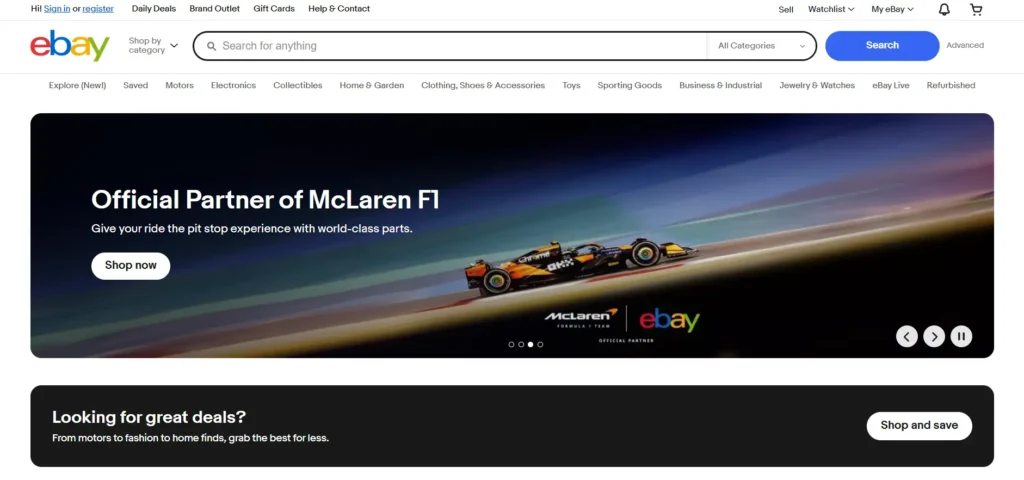
Fee Structure Analysis
- Listing Fee: Free up to 50 monthly listings; $0.30 per additional listing.
- Final Value Fee: 10-12% of the sale price.
- Payment Processing Fee: Varies by country (typically around 2.9% + $0.30).
Features and Tools
- Auction and Fixed-Price Listings: Flexibility in how you sell your products.
- Analytics: Comprehensive sales and traffic insights.
- Marketing Tools: Promoted Listings and advertising options.
Pros and Cons
Success Metrics
- Average Sales Volume: Varies; high volume possible with the right products and pricing.
- User Base: Millions of active buyers worldwide.
Real-world Examples
Sellers use eBay to offer AI-generated collectibles, unique art pieces, and customized merchandise, taking advantage of eBay’s broad reach and flexible selling formats.
ArtStation
Platform Overview
ArtStation is a dedicated platform for artists to showcase and sell their work, including AI-generated art. It’s popular among digital artists, illustrators, and game developers, making it an ideal platform for where to sell AI generated products.
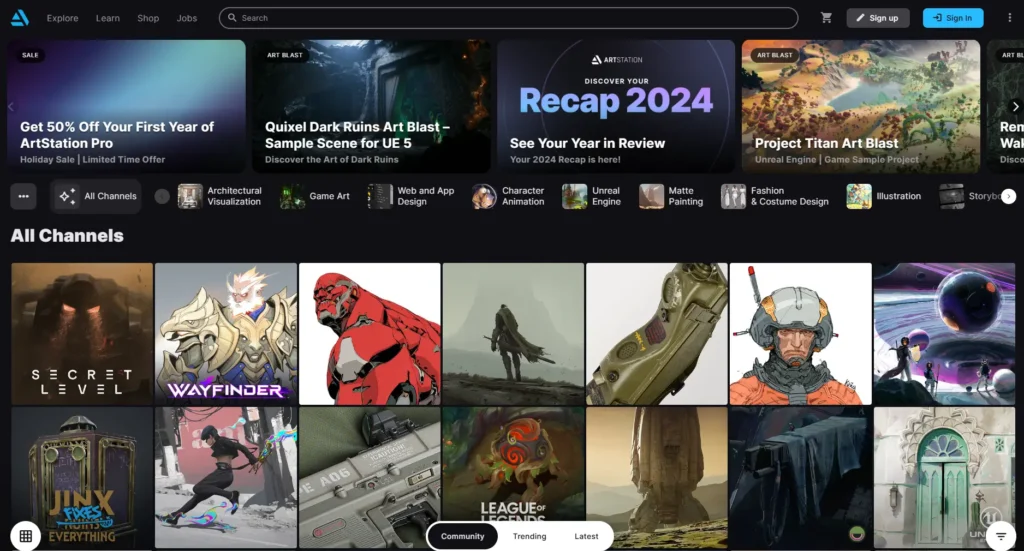
Fee Structure Analysis
- Basic Account: Free with limited features.
- Pro Account: $10 per month for additional features.
- Commission Fee: 5% on each sale.
Features and Tools
- Portfolio Showcase: Professional portfolio customization.
- Marketplace: Sell prints, digital downloads, and other products.
- Analytics: Track portfolio views and sales performance.
Pros and Cons
Success Metrics
- Average Sales Volume: Moderate; success depends on portfolio quality and marketing efforts.
- User Base: A focused community of artists and buyers interested in high-quality art.
Real-world Examples
Digital artists showcase their AI-generated illustrations and offer prints through ArtStation, benefiting from the platform’s professional environment and art-focused audience.
Society6
Platform Overview
Society6 is a print-on-demand platform that allows artists to sell their designs on various products, including art prints, home decor, and apparel.

Fee Structure Analysis
- Artist Margin: Artists set their markup above the base price.
- No Upfront Costs: Society6 handles production, shipping, and customer service.
Features and Tools
- Products: There’s an array of merchandise that showcases the styles.
- Customization: Limited to setting margins and selecting products.
- Marketing Tools: Integrated with social media for sharing products.
Pros and Cons
Success Metrics
- Average Sales Volume: Consistent sales for popular designs; top artists earn significant passive income.
- User Base: Millions of global buyers are seeking unique and artistic products.
Real-world Examples
Artists upload their AI generated designs to Society6, which are then available on products like pillows, tapestries, and phone cases, providing a seamless way to monetize their art without handling production.
Table: Platform Comparison Matrix
| Platform | Listing Fee | Transaction Fee | Subscription | Product Types | Customization | Pros | Cons |
| Etsy | $0.20/item | 6.5% | None | Handmade, vintage, unique | High | Large audience, easy setup | High competition, fees accumulate |
| Shopify | N/A | 2.9% + 30¢ | $29-$299/month | Any product | Extensive | Full control, scalable, robust tools | Monthly fees, setup complexity |
| Redbubble | N/A | Variable | None | Print-on-demand products | Limited | No upfront costs, easy to use | Lower margins, limited branding |
| Adobe Stock | N/A | 33% royalty | None | Digital assets | Limited | Professional audience, high-quality standards | Strict guidelines, competitive |
| Fiverr | N/A | 20% | None | Freelance services | Moderate | Large marketplace, flexible services | High commission, competitive |
| Creative Market | N/A | 30% | None | Digital design assets | Limited | Creative community, easy uploads | High commission, niche audience |
| Amazon Handmade | $39.99/month | 15% | $39.99/month | Handmade and unique products | Moderate | Amazon’s vast reach, trusted platform | High subscription fee, strict eligibility |
| eBay | Free up to 50 | 10-12% | None | Any product | Moderate | Large, diverse audience, flexible selling | High competition, fees accumulate |
| ArtStation | Free/$10/month | 5% | $10/month | Art and digital creations | High | Targeted audience, lower commission | Smaller audience, limited product types |
| Society6 | N/A | Artist sets margin | None | Print-on-demand products | Limited | No inventory, wide product range | Lower margins, limited branding |
Fee Calculator
To help you determine which platform offers the best financial advantage based on your expected sales volume, use the fee calculator below. Enter your expected monthly sales and the average price per product to see the estimated fees for each platform, including those popular for selling AI generated products.
| Platform | Monthly Sales ($) | Average Price per Product ($) | Estimated Monthly Fees ($) |
| Etsy | |||
| Shopify | |||
| Redbubble | |||
| Adobe Stock | |||
| Fiverr | |||
| Creative Market | |||
| Amazon Handmade | |||
| eBay | |||
| ArtStation | |||
| Society6 |
How to Use the Calculator
- Enter your expected monthly sales in dollars.
- Input the average price per product you plan to sell.
- Review the estimated monthly fees for each platform to determine which offers the best financial fit for your business.
Success Metrics and How to Measure Them
Understanding and tracking success metrics is vital to optimize your sales strategy and ensure sustained growth. Below are key metrics to monitor and tools to help you measure them effectively.
Key Metrics
- Sales Volume: Total revenue generated from sales.
- Conversion Rate: Percentage of users who purchase.
- Customer Acquisition Cost (CAC): Cost incurred to acquire a new customer.
- Average Order Value (AOV): Average amount spent per order.
- Repurchase Rate The percentage of customers that make several purchases.
- Customer Lifetime Value (CLV): Total revenue expected from customers over their lifetime.

Tools for Tracking
- Google Analytics: Comprehensive tool for tracking website traffic, user behavior, and conversion rates.
- Platform-specific Analytics: Most platforms like Shopify and Etsy offer built-in analytics tools.
- CRM Systems: Tools like HubSpot or Salesforce to manage customer interactions and track CLV.
- Heatmaps: Tools like Hotjar to visualize user interactions on your store.
- A/B Testing Tools: Optimize product listings and marketing strategies through testing variations using tools like Optimizely.
Setting Goals
- Smart Goals Be sure that your goals are Measurable, Specific achievable, relevant and time-bound.
- Example: Increase monthly sales by 20% within the next six months.
- Benchmarking: Compare your metrics against industry standards to gauge performance.
- Regular Reviews: Conduct monthly or quarterly reviews to assess progress and adjust strategies accordingly.
Market Analysis
Competitive Landscape
The market for AI-generated products is becoming increasingly competitive. Key players include established marketplaces like Etsy and Shopify, as well as specialized platforms like ArtStation and Adobe Stock.
To succeed in this growing sector, it’s important to understand where to sell AI generated products and differentiate your offerings through unique designs, competitive pricing, and exceptional customer service.
Additionally, understanding the legal aspects of AI content legal rights can give you a competitive edge.
SWOT Analysis
| Strengths | Weaknesses |
| Unique, AI generated products | High competition on popular platforms |
| Ability to scale with print-on-demand services | Limited control on some platforms |
| Diverse product offerings | Initial setup costs on certain platforms |
| Access to global marketplaces | Dependence on platform policies and fees |
| Opportunities | Threats |
| Growing demand for unique and personalized products | Rapid technological changes in AI |
| Expansion into emerging markets | Increasing competition from new sellers |
| Leveraging social media and digital marketing | Changes in platform fee structures |
| Collaboration with other artists and brands | Potential intellectual property issues with AI |
Future Outlook
The AI generated products market is poised for continued growth as AI technology advances and consumer interest in unique, personalized products increases. Emerging opportunities include:
- Niche Markets: Targeting specific demographics or interests.
- Collaborations: Partnering with influencers or other artists to expand reach.
- Innovative Products: Developing new AI generated products to stay ahead of trends.
- Sustainability: Emphasizing eco-friendly production methods and materials.
Conclusion
Selecting the best platform for selling ai digital products you have created is a crucial choice that could have a major impact on the success of your business.
Etsy offers a vast and active customer base, making it ideal for beginners. Shopify provides extensive customization and scalability for those looking to build a robust online store.
Redbubble and Society6 are excellent for print-on-demand services with minimal upfront costs, while Adobe Stock and ArtStation cater to professional artists seeking high-quality platforms.
Think about your needs specifically like the level of customization you would like to have, target audience, and budget, when selecting a platform. Use tools like the fee calculator and monitor success metrics to optimize your strategy continuously. Additionally, explore our AI Product Marketplace resources to enhance your selling experience.
By leveraging the right platform and implementing effective marketing strategies, you can monetize your AI generated products and achieve sustained growth.
Ready to take the next step? Use our fee calculator to evaluate the best platform for your business, choose the right marketplace, and start selling your AI generated products today!
FAQ
- What are AI generated products?
AI generated products are items created using artificial intelligence algorithms. This includes digital art, music, designs, writing, and physical products like apparel and accessories.
- Which platform has the lowest fees for selling AI generated products?
Platforms like Redbubble and Society6 offer no upfront costs, but their fee structures vary based on product type and markup. Using the fee calculator to determine which platform aligns best with your sales expectations is essential.
- Can I sell physical AI generated products?
Yes, platforms like Shopify, Etsy, Amazon Handmade, and eBay allow you to sell digital and physical AI generated products, including custom merchandise and handcrafted items.
- How do I stand out in a competitive marketplace?
Focus on unique designs, high-quality products, excellent customer service, and effective marketing strategies. Establishing a strong brand image as well as engaging your target market will also help you make your products stand out. Additionally, explore the best AI tools for beginners to enhance your product creation process.
- Do I need technical skills to set up a store on Shopify?
While Shopify is user-friendly, having some technical knowledge can help you customize your store more effectively. However, Shopify provides numerous templates and resources to assist you in setting up without extensive technical skills. Consider exploring our guide on the AI creator tech stack for more advanced setups.



